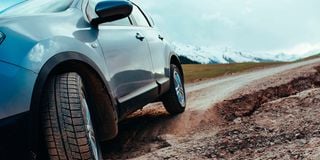Did you know your driving style can multiply wear-and-tear?

Wear-and-tear level can be better or worse depending on the condition of the vehicle.
What you need to know:
- Wear-and-tear level can be better or worse depending on the condition of the vehicle.
- It costs less to build a smooth road than to maintain the vehicles that use a bad one.
How much more wear-and-tear is inflicted on a car by a rough or bumpy road as compared to smooth tarmac? - BK
The wear-and-tear of driving at a moderate and steady speed in a straight line on smooth tarmac is nearly nil. Even gentle cornering, braking and accelerating will roughly double that. But what it is doubling is very little.
More aggressive driving, at higher speed and with harsh cornering, braking and acceleration, can multiply the wear-and-tear in the same conditions by a factor of 10, especially on tyres and brakes, and fuel consumption can double.
Anything other than smooth tarmac is, of course, a very wide range of variables, such as potholes, speed bumps, rumble strips, steep hills, traffic levels and – on dirt roads – whether or not there is a decent wearing course or whether the surface is deep sand, sticky mud, perhaps riddled with gulleys, washaways and sumps and bumps or corrugated.
And if there isn’t a wearing course, is the substrate a swamp or a dustbowl or deep sand? Or, very commonly, a bed of rough cobbles or large, lumpy and jagged rocks!
Wear-and-tear level
Whichever of these conditions is the case, the wear-and-tear level can be better or worse depending on the condition of the vehicle (especially its suspension and all its bushes and mountings), the driving skill and style, and the chosen speed.
Dead slow is the best answer in some cases; not too slow - and sometimes quite fast- is the remedy in others.
In summary, any rural or access road which almost everybody would describe as “awful” can increase wear and tear by a factor of as much as 100. And even do immediate damage to a vehicle that is fragile or which is crudely driven.
The statistical conclusion is not complicated. It costs less to build a smooth road than to maintain the vehicles that use a bad one.
The anomaly we all face to some extent every day arises because the cost of building a good road comes out of the collective State pocket, and the cost of maintaining a car used in rough conditions comes out of another – yours.





